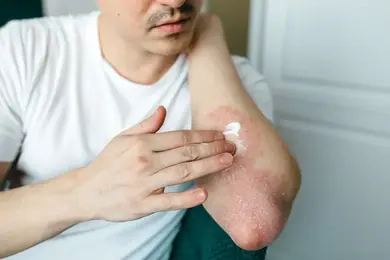What Plaque Psoriasis Looks Like
Plaque psoriasis can vary in appearance from person to person, but there are some common characteristics to look out for. The most obvious sign of plaque psoriasis is the presence of raised, red plaques on the skin. These plaques are often covered with silvery-white scales, which can flake off and make the skin appear dry and cracked. In some cases, the skin around the plaques may be inflamed and swollen, and the plaques themselves may be itchy and painful to the touch.
In addition to the physical symptoms, plaque psoriasis can also have a significant impact on a person's emotional well-being. The visible nature of the condition can lead to feelings of self-consciousness and embarrassment, and many people with plaque psoriasis report feeling stigmatized or judged because of their appearance.
Treatment Options for Plaque Psoriasis
While there is currently no cure for plaque psoriasis, there are several treatment options available to help manage the symptoms and improve the quality of life for those with the condition. The most common treatments for plaque psoriasis include topical medications, phototherapy, and systemic medications.
Topical medications, such as corticosteroids and retinoids, are applied directly to the skin and can help reduce inflammation and slow down the growth of skin cells. Phototherapy, also known as light therapy, involves exposing the skin to ultraviolet light to help reduce inflammation and improve the appearance of the plaques. Systemic medications, such as biologics and oral retinoids, work from the inside out to target the underlying causes of plaque psoriasis and can be particularly effective for those with moderate to severe symptoms.
In addition to these medical treatments, there are also some lifestyle changes that can help manage plaque psoriasis. Keeping the skin moisturized, avoiding triggers such as stress and certain medications, and maintaining a healthy diet and exercise routine can all play a role in managing the symptoms of plaque psoriasis.
In conclusion, plaque psoriasis is a chronic autoimmune condition that causes red, scaly patches to develop on the skin. While the condition can be physically and emotionally distressing, there are treatment options available to help manage the symptoms and improve the quality of life for those with plaque psoriasis. If you suspect that you may have plaque psoriasis, it's important to consult with a dermatologist to discuss your treatment options and develop a personalized plan for managing the condition.

